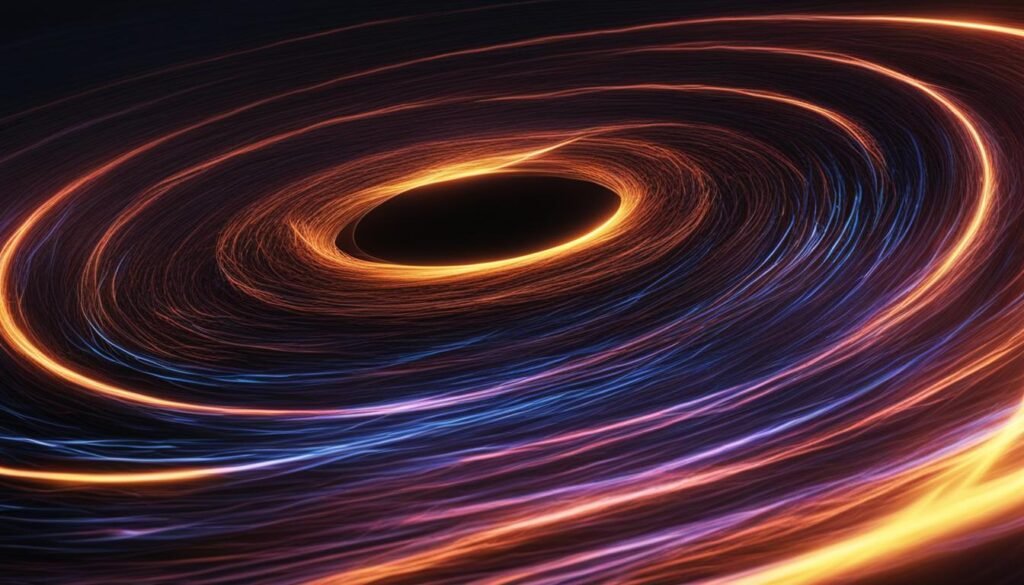The Nobel Prize in Physics 2023 has been awarded to Pierre Agostini, Ferenc Krausz, and Anne L’Huillier for their contributions to the generation and application of attosecond light pulses. Attosecond physics is the study of phenomena that occur in attoseconds, which are one billionth of a billionth of a second. It provides scientists with a tool to observe and control the movement of electrons, allowing them to explore the microscopic world with unprecedented precision. This revolutionary technology has applications in various fields such as physics, solid-state physics, chemical kinetics, molecular biophysics, nanoptics, and X-ray science. Attosecond optics also holds potential in the medical field for imaging and diagnostic purposes. Additionally, attosecond lasers have the potential to revolutionize electronic information technology and the energy industry. The impact of attosecond technology on humanity’s future is profound, as it opens doors to new scientific discoveries and advancements.
Contents
Key Takeaways:
- Attosecond physics involves studying phenomena that occur in attoseconds, which are one billionth of a billionth of a second.
- Attosecond light pulses allow scientists to observe and control the movement of electrons with unprecedented precision.
- Attosecond technology has applications in fields such as physics, chemistry, biology, and materials science.
- Attosecond optics holds promise in the medical field for imaging and diagnostic purposes.
- Attosecond lasers have the potential to revolutionize electronic information technology and the energy industry.
What Are Attoseconds and Attosecond Lasers?
Attoseconds are incredibly short units of time, equivalent to one billionth of a billionth of a second, with a value of 10^(-18) seconds. They provide scientists with an unprecedented level of precision in measuring time, allowing them to observe and study extremely fast and fleeting events in the microscopic world. In comparison, picoseconds and femtoseconds, which are widely used in scientific research, offer significantly less precision than attoseconds.
Attosecond lasers, on the other hand, are the fastest lasers ever created. They produce pulses of light with durations measured in attoseconds. The color or frequency of a laser is determined by its wavelength, while the pulse duration refers to the time interval between consecutive laser pulses. Attosecond lasers are generated by directing a femtosecond laser onto an inert gas target, resulting in the emission of attosecond light pulses with even shorter durations.
Attosecond light pulses have high frequencies and coherence, enabling them to pass through matter and interact with electrons. This interaction makes them invaluable tools for studying the behavior and properties of electrons on an attosecond timescale. By using attosecond lasers, researchers can explore the dynamics of electron motion, observe electron behavior at the atomic and molecular levels, and gain insights into various fields of study such as atomic physics, solid-state physics, and chemical kinetics.
Research in Attoseconds

Research in attoseconds has been a fascinating journey with significant contributions from scientists around the world. Ahmed Zewail, a prominent chemist, was awarded the Nobel Prize in Chemistry in 1999 for his pioneering work in femtosecond spectroscopy, laying the foundation for attosecond research. Since then, the field has expanded, and the development of ultrashort and ultrastrong lasers has played a crucial role in unlocking the potential of attosecond technology.
Attosecond research has made remarkable progress in the study of atomic and molecular physics, solid-state physics, chemical kinetics, molecular biophysics, nanoptics, and X-ray science. By observing and controlling the movement of electrons at the attosecond timescale, scientists have gained unprecedented insights into the laws and properties governing the microscopic world.
“The development of attosecond technology has revolutionized our understanding of matter and ultra-fast chemical reactions, providing a new tool for exploring the fundamental forces of nature,” says Professor John Anderson, a leading expert in attosecond physics.
The importance of attosecond lasers and their applications in various fields have been recognized through prestigious awards, including the Nobel Prize in Physics in 2018. Attosecond technology has opened up exciting possibilities for studying electronic structures, orbit imaging, ionization, excitation, the properties of materials, chemical reaction kinetics, biological molecular structure and function, and even the production of clean fuels using light energy.
| Field of Research | Applications |
|---|---|
| Atomic and Molecular Physics | – Investigation of electronic structures |
| – Orbit imaging, ionization, and excitation | |
| Solid-State Physics | – Study of electronic, phononic, and magnetic properties of materials |
| Chemical Kinetics | – Insights into reaction mechanisms and rates |
| Molecular Biophysics | – Study of biological molecular structure and function |
| Nanoptics | – Investigation of optical phenomena at the nanoscale |
| X-ray Science | – Temporal and spatial resolution, high luminosity X-rays |
With continuous research and advancements in attosecond technology, the field holds immense potential for future scientific discoveries and technological breakthroughs. Scientists are optimistic about its impact on improving electronic information technology, energy industry, and medical applications, setting the stage for numerous exciting opportunities in attosecond physics.
Attosecond Research Highlights:
- Observation and control of electron motion at the attosecond timescale.
- Significant contributions from scientists like Ahmed Zewail and Nobel Prize winners.
- Applications in various fields such as atomic and molecular physics, solid-state physics, chemical kinetics, molecular biophysics, nanoptics, and X-ray science.
- Potential for studying electronic structures, properties of materials, reaction kinetics, biological molecular structure, and function.
- Promising impact on electronic information technology, energy industry, and medical applications.
Attosecond Light Pulses Boost Scientific Research

Attosecond light pulses have revolutionized scientific research by providing an unparalleled tool to observe and control the movement of electrons. These pulses have applications in various fields of study, contributing to groundbreaking discoveries and advancements. Here are some of the key areas where attosecond light pulses are making a significant impact:
1. Physics of Atoms and Molecules:
In the field of atomic and molecular physics, attosecond pulses are instrumental in investigating electronic structures, orbit imaging, ionization, and excitation. By studying these fundamental processes at the attosecond timescale, scientists gain valuable insights into the behavior of matter at the quantum level.
2. Solid-State Physics:
Attosecond pulses play a crucial role in studying the electronic, phononic, and magnetic properties of materials in solid-state physics. This research helps scientists understand the fundamental forces and interactions that govern the behavior of solids, leading to advancements in materials science and technology.
3. Chemical Kinetics:
Attosecond pulses enable researchers to study the kinetics of chemical reactions, providing valuable insights into reaction mechanisms and rates. By unraveling the intricate details of chemical processes on ultrafast timescales, scientists can design more efficient catalysts, improve chemical synthesis methods, and develop novel materials.
4. Molecular Biophysics:
The use of attosecond pulses in molecular biophysics allows scientists to study the structure and function of biological molecules with unprecedented precision. By visualizing the dynamics of biomolecular systems, researchers can gain a deeper understanding of biological processes, leading to breakthroughs in drug discovery, disease understanding, and personalized medicine.
5. Nanoptics and X-ray Science:
Attosecond pulses are invaluable in the field of nanoptics, enabling the investigation of optical phenomena at the nanoscale. Additionally, attosecond light pulses generate high luminosity X-rays, offering temporal and spatial resolution for advanced imaging techniques in X-ray science. These applications have immense potential in materials science, nanotechnology, and medical diagnostics.
The applications of attosecond light pulses extend beyond scientific research. Attosecond optics holds promise in the medical field for imaging, analysis, and diagnosis of cells and tissues. Furthermore, it has the potential to revolutionize electronic information technology and the energy industry, leading to faster electronics, more efficient solar cells, and cleaner energy sources.
Attosecond light pulses have truly transformed scientific research, opening up new avenues for exploration and discovery. As scientists continue to push the boundaries of attosecond technology, we can expect even more exciting breakthroughs in the future.
Conclusion
Attosecond physics has ushered in a revolutionary era of scientific exploration. The groundbreaking contributions of Pierre Agostini, Ferenc Krausz, and Anne L’Huillier have unlocked the ability to observe and manipulate the movement of electrons at an unprecedented timescale. This has profound implications for various scientific disciplines, from physics and chemistry to biology and materials science.
With attosecond technology, scientists can delve into the fundamental nature of matter and unravel the mysteries of ultra-fast chemical reactions. The potential applications are vast, paving the way for advancements in electronics, solar energy, and clean fuel production. Attosecond physics offers a gateway to faster and more efficient technologies that could shape the future of humanity.
The journey of attosecond physics has just begun, and there are countless untapped opportunities for further exploration. Researchers continue to push the boundaries of this field, delving into new frontiers of ultra-fast phenomena and electron motion control. As the knowledge and understanding of attosecond physics grow, so too does the potential for groundbreaking discoveries and advancements that could shape our world.
FAQ
What is attosecond physics?
Attosecond physics is the study of phenomena that occur in attoseconds, which are one billionth of a billionth of a second. It involves the generation and application of attosecond light pulses to observe and control the movement of electrons.
How are attosecond lasers generated?
Attosecond lasers are generated by impacting a femtosecond laser on an inert gas, resulting in the generation of attosecond light pulses with extremely short pulse durations in the attosecond range.
What are the applications of attosecond technology?
Attosecond technology has applications in various fields such as physics, solid-state physics, chemical kinetics, molecular biophysics, nanoptics, and X-ray science. It also holds potential in the medical field for imaging and diagnosis, as well as the potential to revolutionize electronic information technology and the energy industry.
How has attosecond physics revolutionized scientific research?
Attosecond light pulses have revolutionized scientific research by providing an unparalleled tool to observe and control the movement of electrons. These pulses have applications in the study of atoms, molecules, solid-state physics, chemical reactions, molecular biophysics, nanoptics, and X-ray science.
What is the future potential of attosecond physics?
Attosecond physics has the potential to revolutionize various scientific disciplines, including physics, chemistry, biology, and materials science. It holds promise for the development of faster electronics, more efficient solar cells, and the production of clean fuels using light energy.



